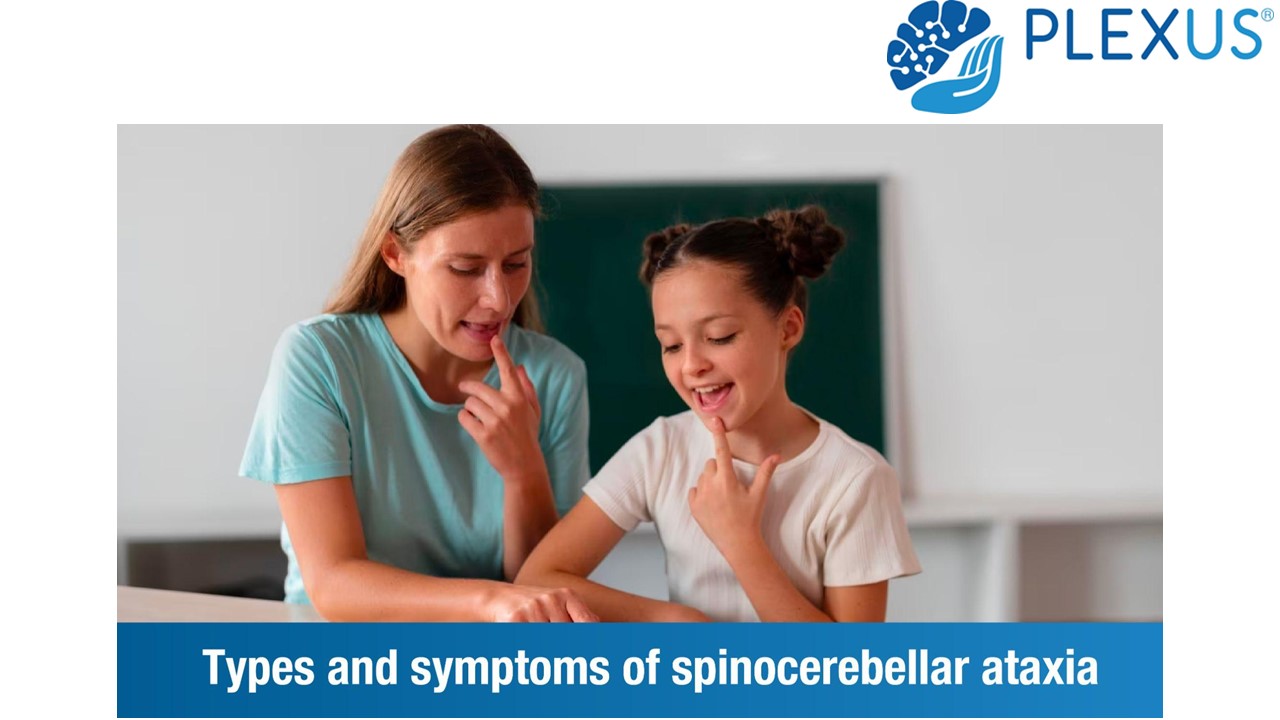What is Spinocerebellar Ataxia? - PowerPoint PPT Presentation
Title:
What is Spinocerebellar Ataxia?
Description:
It is a genetic disease caused by either a recessive or dominant gene. SCA refers to a group of ataxias that are Known to be hereditary Cause harm to the cerebellum The cerebellum is the part of the brain which maintains balance and controls movements. – PowerPoint PPT presentation
Number of Views:3
Title: What is Spinocerebellar Ataxia?
1
(No Transcript)
2
What is Spinocerebellar Ataxia?
- It is a genetic disease caused by either a
recessive or dominant gene. - SCA refers to a group of ataxias that are
- Known to be hereditary
- Cause harm to the cerebellum
- The cerebellum is the part of the brain which
maintains balance and controls movements.
3
A damaged cerebellum can lead to
- Uncoordinated movements and gait
- Impaired hand-eye coordination
- Abnormal speech
4
Types of SCA
- There are 40 types of SCA discovered so far. Each
type is named SCA1, SCA2, and so on. - The numbers indicate the order in which they were
discovered. - SCA3 is the most common type of Spinocerebellar
Ataxia. - It is also known as Machado-Joseph Disease.
5
Machado-Joseph Disease
- This type of SCA leads to -
- Gradual progressive clumsiness in arms and legs
- Speech difficulties
- Dysphagia (swallowing troubles)
- Staggering or lurching gait
- Vision troubles (accompanied by bulging eyes or
double vision) - Lower limb spasticity
6
Symptoms of SCA
- Slurred speech
- Poor coordination of movement
- Inability to perform basic fine motor movements
- Dysphagia (difficulty in swallowing)
- Unsteady gait
- Tendency to trip
- Rapid back-and-forth eye movements
- Symptoms of SCA typically manifest after 18 years
of age, and gradually worsen over the years. - Timely treatment can help stall the progression
of the condition.
7
Causes of SCA
- Stroke
- Cerebral palsy
- Autoimmune diseases like multiple sclerosis,
celiac disease, etc - Vitamin deficiency (specifically Vitamins E,
B-12, thiamin) - Side effects of medication (chemotherapy,
sedatives, etc) - Alcoholism
- Genetic factors
- Viral infections like chicken pox have been known
to cause Ataxia, but it typically abates with
time - Head trauma
- Parkinsons disease
8
Treatment and care
- Physiotherapy
- Coordination training
- Balance training
- Trunk stability training
- Trunk rehabilitation
- Core strengthening
- Locomotor exercises
- Occupational therapy
- Activities for Daily Living (ADL)
- Handwriting training
- Hand function training
- Balance training
- Speech therapy
- Swallowing techniques
- Articulation techniques
- Pronunciation exercises
- Assistive communication devices
- Oral musculature strengthening exercises
















![[PDF] Pathophysiology of Disease: An Introduction to Clinical Medicine 8E 8th Edition Full PowerPoint PPT Presentation](https://s3.amazonaws.com/images.powershow.com/10084329.th0.jpg?_=20240724012)














